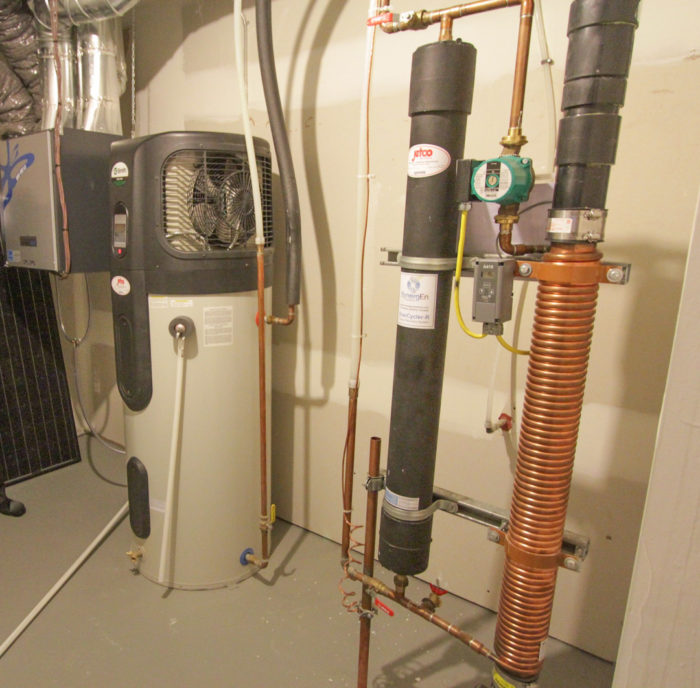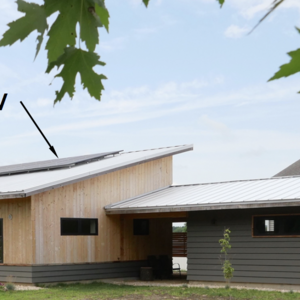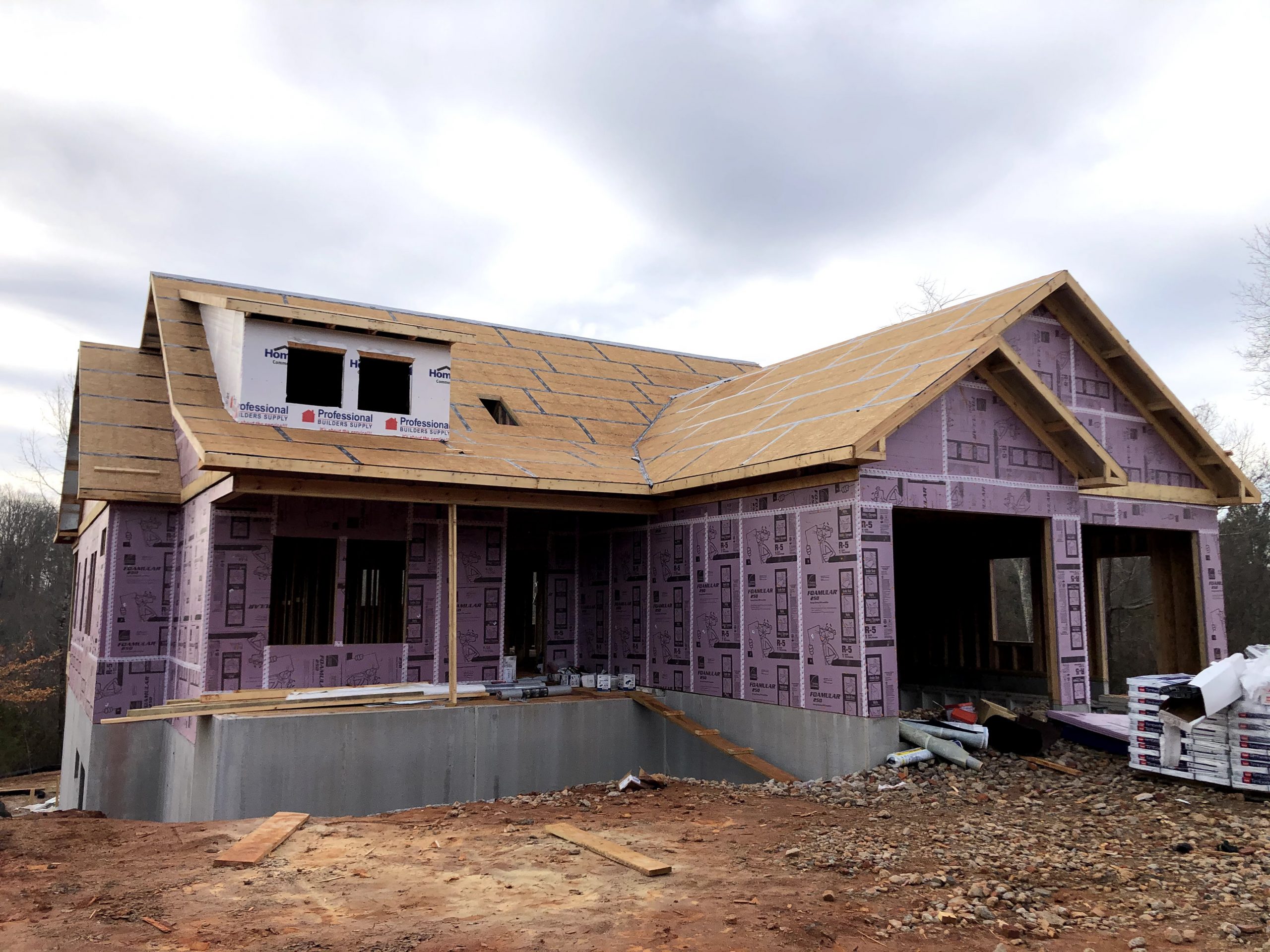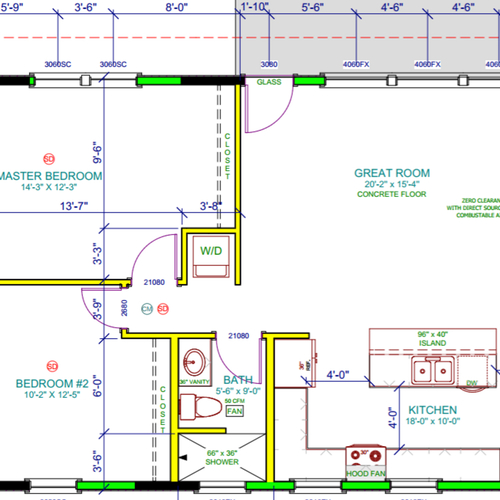
Image Credit: Green Energy Futures / CC BY-NC-SA 2.0 / Flickr
Writing from northeast Ohio, a reader with the screen name “User-6877304” — let’s call him Steve — is seeking comments on his plans to build an affordable net-zero energy home. The house, to be built on a 30-foot by 50-foot slab-on-grade foundation, seems to have many characteristics of a “Pretty Good House” — that is, it’s well insulated and ventilated but not attempting to hit the Passive House metric.
Steve plans to install R-10 rigid insulation beneath the slab. The house will have double-stud walls insulated with cellulose to R-40 and a raised-heel truss roof insulated to R-60.
“A simple gable metal roof,” he writes in a Q&A post at Green Building Advisor. “Solar panels. Basic interior finishes: nothing custom.”
His questions boil down to a consideration of specific features: the best heating and cooling option, windows, drain-water heat recovery, and whether a heat-recovery or energy-recovery ventilator is a good investment.
That’s today’s Q&A Spotlight.
Start with this document
Dana Dorsett suggests that Steve start by reviewing the recommendations in a Building America report authored by John Straube in 2010 and updated the following year. (For more information on this report, see R-Value Advice from Building Science Corporation.) Because the report is a few years old, Dorsett points out, the efficiencies of photovoltaic systems and heat pumps have changed somewhat, meaning that Steve can probably hit net-zero performance with the recommendations for Climate Zone 4 rather than Climate Zone 5 where Steve is actually going to build.
But, he adds, it’s important to remember the effect of thermal bridging.
“Note, those are ‘whole-assembly R-values,’ not center-of-cavity R-values, factoring in all the thermal bridging,” Dorsett say. “An R-25 wall could be a 2×6 / R-20 wall with 2 inches of exterior polyiso foam.…
Weekly Newsletter
Get building science and energy efficiency advice, plus special offers, in your inbox.

This article is only available to GBA Prime Members
Sign up for a free trial and get instant access to this article as well as GBA’s complete library of premium articles and construction details.
Start Free TrialAlready a member? Log in















8 Comments
Triple pane price
Since it was mentioned, what is the price difference between double and triple pane windows on average in USA?
In Europe, they make us do all sorts of extreme things for the sake of energy efficiency (though I don't necessarily mind that always), so triple pane, where I live in central europe, is like 1.2$/sqft over double pane. For the house I am planning, with ~2500 sqft of windows, it comes out to ~300$.
A few comments for Peter Yost
This house is in US clmate zone 5, which is warmer than southern VT, and I was recommending 2-3" of reclaimed foam on the exterior of a single studwall as being a cheaper way to hit the necessary performance level than dense-packed double-studwall. If he went through with the double studwall approach a smart vapor retarder would definitely be cheap insurance, but the cold sheathing risks in his location aren't nearly as high as even the warm edge of zone 6.
While triple-pane windows are nice, specifying them on a house based on a perceived resale value at some undetermined date is a pretty lame, and definitely NOT "Cheapest way to build net zero house?", the title of his original thread.
It's good to know that I'm not crazy to assume there can be increased radon levels with exhaust only ventilation schemes in tight houses.
I agree with Peter Yost's
I agree with Peter Yost's comments on windows: we've used primarily good quality vinyl triple glazed windows or European style Tilt-Turns on the NZR houses we've built. Both work well; the European are 30-35% +/- more money (depending on how much fixed glass - which is relatively inexpensive with European style windows). But they aren't apples to apples. With typical vinyl windows, the lifetime is shortened by deterioration of the vinyl from sunlight and the glass-vinyl seal which is affected by the different rates on expansion between vinyl and glass. In contrast, the European windows have typically a better U value, but they are much more rugged, with better window seals which separate the glass from the vinyl, a tighter and more secure locking system and a more secure operating system. in other words, they're much better windows for not that much more cost.
Still not the cheapest path to Net Zero Energy (@ Bob Irving)
In zone 5 you don't need triple panes to hit Net Zero, and it's not the lowest cost upgrade path. A purty-good U0.25-ish window will do.
Comparing a vinyl triple pane to a European model on price/value isn't even relevant to the discussion. A Euro tilt & turn triple-pane will be SUBSTANTIALLY higher cost than a fairly decent U0.25 double-pane, not 30-35% more expensive.
The original thread wasn't about the best value or best performance, only lowest cost path to net zero, in a cool but not too cold climate.
Lunos HRV in our Net Zero home
I am living in a 1700 sq.ft. operational Net-Zero home here in Southern Oregon Zone 4, (4600 HDD) that I designed and moved into 16 months ago. We have 10" double walls, 14" raised heel trusses, on a thermally isolated finished floor slab with 4" of EPS sub-slab. We went the extra mile and used Prosoco fluid applied WRB and tested out at .06 ACH50. Solar System is 6.7kw. The EPS score was 1. With such a tight shell we installed 2 pairs of Lunos HRV units (approx. $2k). These maintain good air quality as measured by CO2. One pair would have been quite insufficient. We have only 2 primary occupants. A single mini-split is more than adequate to condition our 3 bdrm. home. Temperatures are remarkably even throughout. I actually need to shut the master bdrm door on winter nights to try and cool it off a bit so that we sleep better. I can't tell you how comfortable our home is year round compared to our previous home built 35 yrs. ago.
Frost / freezing ERV research
I found the CCHRC folks did tests on ERVs in Alaska with their findings posted so wanted to share after reading Dana v Martin's comments:
http://www.cchrc.org/energy-recovery-ventilators-ervs-cold-climates
Response to VaporTranz
Vapor,
For more information on this topic, see "Preventing Frost Buildup in HRVs and ERVs."
I'm a Prime subscriber now. 1 month of reading and articles like that are too good! ty
Log in or become a member to post a comment.
Sign up Log in